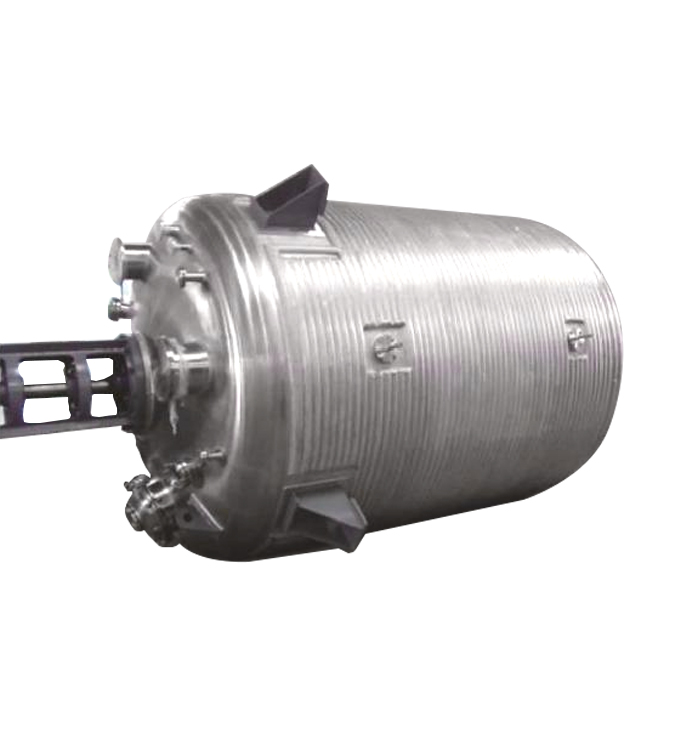
The generalized understanding of the reactor is a container with physical or chemical reactions. Through the structural design and parameter configuration of the container, the heating, evaporation, cooling and low-speed mixing functions required by the process are realized.
Reactors are widely used in petroleum, chemical industry, rubber, pesticides, dyes, medicine, food, pressure vessels used to complete vulcanization, nitration, hydrogenation, alkylation, polymerization, condensation and other processes, such as reactors, reaction pots, decomposition pots, polymerization kettles, etc. The materials are generally carbon-manganese steel, stainless steel, zirconium, nickel-based (Hastelloy, Monel, Inconel) alloys and other composite materials.
The reaction kettle can be made of stainless steel materials such as SUS304 and SUS316L. Agitators are anchor type, frame type, paddle type, turbine type, scraper type, combined type, rotating mechanism can be used cycloid reducer, stepless speed reducer or frequency conversion speed regulation, etc., can meet the special response requirements of various materials. The sealing device can adopt a sealing structure such as a mechanical seal and a packing seal. Heating and cooling can adopt jacket, half pipe, coil, Miller plate and other structures. Heating methods include steam, electric heating and heat transfer oil to meet the process needs of different working environments such as acid resistance, high temperature resistance, wear resistance and corrosion resistance. And can be designed and manufactured according to user process requirements.
| Heating/cooling method | ||||||
| Electric heating | Hot water heating | Heat conduction oil circulating heating | Far infrared heating | Outer (inner) coil heating | Jacket cooling | Coil cooling in kettle |
The choice of heating method is mainly related to the heating/cooling temperature required for the chemical reaction and the amount of heat required.
| Kettle body material | |||
| Carbon steel reaction kettle | Stainless steel reaction kettle | Glass-lined reactor (enamel reactor) | Steel lined reactor |
| Internal pressure at work | ||
| Atmospheric pressure reactor | Positive pressure reaction kettle | Auxiliary pressure reaction kettle |
| Stirring form | ||||||
| Paddle type | Anchor paddle type | Box | Ribbon type | Turbine type | Dispersed disc | Combined |
| Heat transfer structure | |||
| Jacketed | Outer half tube | Inner coil type | Combined |
1. circulating oil, steam heating coil reactor
The premise of the use of steam heating reactor is that the customer itself has an additional source (such as steam, circulating oil) or a cooling source (such as tap water).
The reaction kettle jacket into the boiler steam, the steam heat into the kettle, so that the kettle material reaction. Note: The steam heating method is up-in-down-out, and the liquid heating or cooling is down-in-up-out.
The coil reactor is divided into the inner coil, the jacket coil and the outer half coil.
When ordering equipment, the maximum working pressure, maximum working temperature, working medium and working environment must be stated.
2. electric heating reaction kettle
Electric heating reactor has the characteristics of rapid heating, high temperature resistance, corrosion resistance, sanitation, no environmental pollution, no need for boiler automatic heating, low investment, convenient operation and so on.
The heat transfer oil in the jacket is directly heated by the electric heating rod, so that the temperature of the heat transfer oil rises to the required temperature,
